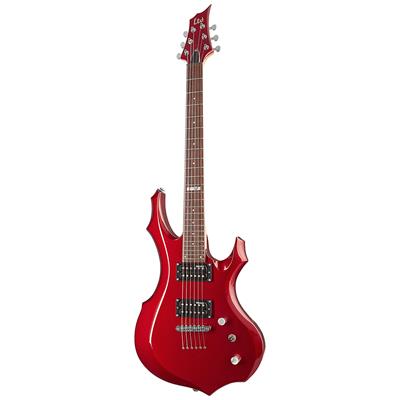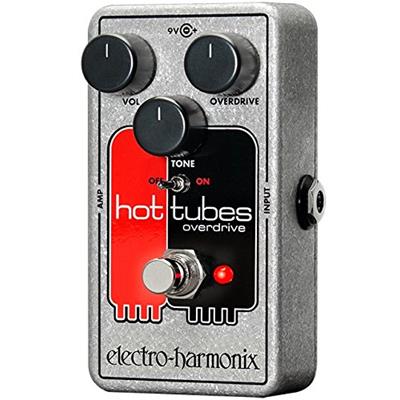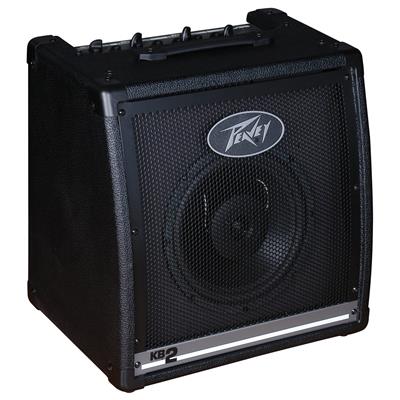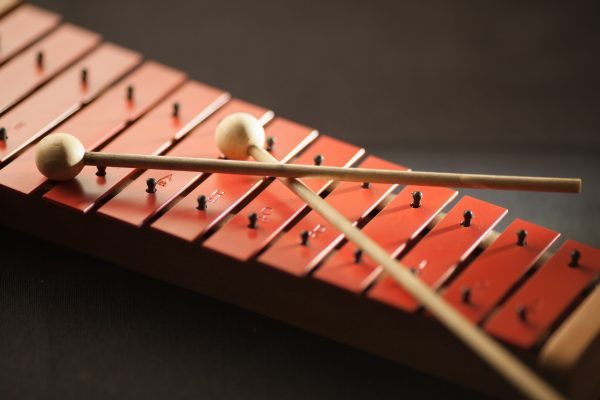We recently did a general post about tonewoods that went in on discussing some of the intricacies of picking a tonewood and even discussed some tonewoods available on the market. A little after we received several requests on doing a more expanded review of tonewoods, talking about necks, bodies and other parts of the guitar and the role of specific tonewoods for each. So we combine our forces, putting together everything we know about most tonewoods, and fueled all of it into this one rather large post about tonewoods. We certainly hope you find this useful and informative, as well as at least a little entertaining.
The Tonewood Story
So you have been out and about, looking at electric guitars, acoustic guitars and bass guitars for weeks now. You have figured out what kind of pickups you want, the hardware you want, you even know the shape and design of the guitar you want. There is only this slight problem you have. You don’t know why you would want to decide on the wood used to make your wood. You don’t even know how to decide on it. So, because I am such a kind soul, that knows how hard it can be to find the right tonewood, I have decided to make a guide. How detailed of a guide? Detailed enough that you won’t sound like a dummy when you talk to your more experienced friends. Though it is limited because we cannot review all woods in existence. Because there are so many and because there are so many things they can be used for. Anyway, let’s get into the thick of it.
What is the tonewood for?
The first problem with making a guide about tonewoods is the fact that you need to understand: all tonewoods are good and bad at certain things. You need to be able to identify which tonewood is good for what, and why.
Acoustic, Electric, Bass
The guitars usually have several parts that might be made of different tonewoods. The body, neck, and some of the hardware might be made of one wood or another. With electric guitars and bass guitars, it’s as simple as that. With acoustic guitars, the body might be made of different tonewoods as well. Such as the top wood being one tonewood and the back and sides being another. So the first thing you need to do is pick the type of instrument you want. Identifying this will give you an idea of what types of wood and how many types of wood you might have to expect in your instrument.
Neck, Body, Hardware
The tonewoods and hardwoods used for the different parts of guitar will have different pressures and requirements imposed upon them. It is only logical then that each part will have a different tonewood that is good for that specific part. The body of the guitar will be more concentrated on being highly resonant and interesting in sound. This means tonewoods with interesting effects on sound. The neck of the guitar is the part that is under the most pressure from the strings of a guitar. This means the wood has to be sturdy and highly resistant to warping. Saddles, fretboards and other parts also have their requirements for the wood, meaning different tonewoods for them as well.
All of the wood
So how will we be identifying different woods for different parts of guitars? Well, below you will see a list of different tonewoods, divided up into categories of body, neck and other. There will definitely be overlap between categories, so don’t be surprised to see woods repeated. Their different roles will also be mentioned in the descriptions of the woods.
Let get to it!

Body Woods
The body woods of a guitar are numerous and vary much in their density, weight and damping. These woods are picked not for their ability to last for ages, but for their interesting effects on the sound of a guitar. Here is a list of some of the more popular and less popular tonewoods that I know of.
-
- Basswood – This is probably one of the most used tonewoods on the market currently. It is present in a huge number of affordable bass guitars, electric guitars and even in some acoustic guitars. It is cheap to grow, cheaper still to work with, which is what makes it popular. The tonewood has good resonance with the bass tones, while the mid and high tones are steady, even though not as expressed. The tonewood is very light, and is on the soft side. It does not have a remarkable grain.
- Maple – Maple is a very hard, dense wood that you mostly see used as the top woods of acoustic guitars. You do not encounter the tonewood as much in the world of electric guitars, though there are some that have been known to use maple tops. The wood is very sturdy, has an understated grain and produces a very bright, energetic sound. The emphasis on the high and mid tones is apparent.
- Mahogany – Mahogany is one of the most popular body tonewoods, across the board of prices and guitar styles. It has many qualities that make it so loved. The dark coloring of the wood and the interesting gran make for a beautiful tonewood to showcase on a guitar. The beautiful and powerful resonance with the low tones is a popular quality of the tonewood. It also has a slight spike in the midtones, while the high tones are a little more understated. The tonewood is rather dense and heavy, meaning great lifespan and a bit of discomfort.
- Alder – Alder has seen a slight decline in its popularity over the past few years. This tonewood was especially popular in the 60s and 70s, the golden age of the stratocaster. Which is why you will often see it used in the bodies of vintage guitars. The tonewood is a very nice middle ground in terms of how dense and light it is. It provides a good lifespan to the guitar and is also very comfortable to carry. The guitar has a very pronounced mid tone, but also sports a very well rounded low tone and beautiful hight tones.
- Swamp Ash – Swamp ash is on par with Alder in terms of popularity, even though it does not have as much vintage appeal to it. Yet swamp ash has a lot of its own appeal as well, with the vintage sound present in the guitar. In terms of tone it is similar to Alder, with the midtones being just as expressed, through the low tones being a little better than in Alder. Swamp ash is slightly denser than Alder, but is light. It has a bright structure with not that much grain, but definitely pleasing to the eye.
- Korina – Korina, also known as the Black Limba, is a very popular tonewood among musicians aware of it, though the low supply of it makes it hard to acquire. The main attraction of the tonewood lies within the beauty of its pattern, with straight streaks covering most of it in a beautiful manner. The tonewood has a nice resonance with the low tones, having a warm and pleasant sound, but also a very pronounced mid range of tones. The tonewood is sturdy and lies somewhere in the middle in terms of weight.
-
- Japanese Ash – Japanese ash does not have much in common with the other ash tonewoods, other than the fact it kind of looks like ash. It is slightly heavier than its relatives, but is also an incredibly high quality tonewood. It provides the musician with a beautiful overall tone, with lovely lows, bright high tones and expressive mid tones. It is a sturdy tonewood that is expensive and easy to fall in love with.
- Poplar – Poplar is also known as American Tulipwood. This tonewood is not that prevalent in the manufacturing industry, because of its tendency to not look as handsome or appealing as the other tonewoods. Still, it is a cheaper alternative to the very popular Alder. It has similar tonal qualities, with expressive mids, a well rounded bottom tone and interesting highs. It is a moderately soft wood, which needs to be colored over so it does not hurt the eyes too much when you see it.
- Wenge – This one is beautiful tonewood to look at. Definitely one of the more aesthetically pleasing, it is black and chocolate colored with yellow streak patterns throughout it. It is a very sturdy, hard and heavy wood. This means a bright tone, though not as bright as maple, with great highs, extremely expressive midtones and alright low tones. The beauty of the tonewood is what makes it so popular in the more expensive guitars.
- Phoenix – This is an interesting tonewood, not only because it has a name that most teenagers would love as their middle name. It originates in China, where it started being used as a cheaper and more easily available alternative to Alder. The tonewood has many similar qualities, including tone. It has very expressive mid tones, with the high and bass tones being present and kicking .The tonewood is light and sturdy, with the grain pattern not being as apparent as with Alder.
- Paulownia – Paulownia is another tonewood originating in Asia as an alternative option for other more expensive tonewoods. This fast growing tonewood is extremely easy to work with and is very cheap for manufacturers. As a result, you will often see the tonewood used in more affordable guitars to great end. The tonewood has an interesting mid tone, with the low tones being well rounded and the high tones being expressive. It is an extremely light hardwood and definitely one that is pretty to look at.
- Agathis – There are more species of Agathis than there should be, which makes it hard to discuss. Still, the general rule with agathis is that it is on the cheap side and makes a great affordable guitar body material. It is lightweight but has tonal properties similar to mahogany. Great resonance with the low tones, a nice spike in the mid-tones and expressive high tones. The problem of the tonewood is the fact that it is so extremely easy to dent and scratch, because of how soft it is.
- Koa – You won’t see Koa on the market too often. This non-traditional tonewood is actually rather rare on the market and has quite the price stuck on it, because of this rarity. Still it has so many lovely qualities. Tonally it is very similar to Mahogany, with the low tone resonance being rather beautiful and enjoyable. The mid-tones are very well expressed but the tonewood has a high tone so much more superior to Mahogany. Looks wise it is one of the more interesting tonewoods, with a bright gold streak laden throughout the dark body of the guitar. It is sturdy, not too heavy nor too light. One of the best, if expensive, tonewoods out there.
- Rosewood – Rosewood is one of the favorites for the back and sides of an acoustic guitar. You won’t see this hardwood present in the electric and bass guitar variety because of how heavy it is. Picking it as the back and sides of an acoustic guitar provides a lot of benefits though. It is extremely resonant with the low tones, creating a deeper sound than mahogany. The mid tones are sufficiently expressive, though the high tones is where the hardwood suffers. The dark wood is often left to be viewed as is for its natural beauty.
Neck Woods
Guitar necks woods are chosen not for their tonal qualities, but for their sturdiness and weight. This means hardwoods with dense builds that might be heavier than the bodies of guitars. Here are some of the more common woods used in the necks of guitars.
- Maple – If you have been looking into electric, or any, guitars as of late, you will know that Maple is possibly the most popular choice for the neck of one. This is because of maple’s incredible hardness and sturdiness, which allows it to resist warping, breaking and extends the lifespan of a guitar. This tonewood is also known to possess a rather interesting coloring, which further emphasizes the beauty of the guitar’s body.
- Mahogany – Mahogany is a popular choice for the body of a guitar, but it is also quite the popular choice for the neck of a guitar. This hardwood has many qualities that make it perfect for the job. It is extremely sturdy and resistant to damage and warping, which means a long and productive life for the guitar. It is also rather dark, which enhances the look of the guitar, whether you want it to remain dark throughout or want the neck to emphasize the brightness of the body.
- Bocote – Bocote is one of the most beautiful hardwoods you will ever get to lay your eyes on. It is very dark, but has beautiful golden streaks throughout it, which enhance the guitar to look somewhere in between divine and a little corrupt. The hardwood is extremely dense and hard, which makes it perfect for the neck of any guitar. Though this wood is also known to be rather heavy, which means designing around this feature might be needed. You don’t see it too often because of how regal and rather pricey the tonewood is, as well as how hard it might be to deal with the weight sometimes.
- Asian Ebony – This tonewood is one of the more interesting out there, simply because its smells a little like bacon when you cut it. Though you are not going to be cutting it, since you want it on your guitar, and this is where the neck shines. It is sturdy and dense, which allows it to be a great neck wood. The tan, chocolaty coloring of the tonewood allows for some great looking guitars. It is lighter than most neck woods and not as hard, making it not the most frequent choice among manufacturers.
- Koa – We have mentioned Koa before as one of the most versatile and beautiful tonewoods out there. This versatility makes the wood exceptionally interesting in the use for necks, where its natural density and hardness allow it to shine. Guitars with this neck are, first of all rather beautiful, and second of all usually end up having long-lasting lifespans.
- Wenge – You won’t encounter this hardwood too often in the neck of a guitar, but when you do, rejoice. It is rather sturdy and hard, which allows for a nice, long lifespan no matter how long you have it. The black, chocolate-streaked pattern in the tonewood makes for a beautiful neck. Though be careful, an improperly handled Wenge neck will tend to become unstable over time.
Other Woods
Guitars are made of many parts and some of them are made of hardwoods as well. Saddles, fretboards and other possible parts all come to mind when thinking about them. Here is a quick list to help you out.
- Ebony – Ebony is probably one of the more expensive, if not popular and loved tonewoods out there to make fretboards and saddles out of. This hardwood is extremely hard, with a beautiful, black color that feels sweet to the eye. Its bright in the high tones, but a little flat in the low tones, which might be a problem, but thankfully it is mostly used in the fretboards and saddles of a guitar. You will most often encounter this wood in higher end guitars since it tends to be on the expensive side.
- Rosewood – Rosewood is probably the most recognized and popular hardwood to use in the fretboard of a guitar, as well as the saddle. This hardwood is rather cheap, but is also very sturdy and hard, as well as tonally gifted. It makes a great fretboard, in terms of looks and smoothness, as well as a very nice saddle. Present across the board because of its low price and high quality.
- Pau Ferro – Pau Ferro, with its rather fun time, is also rather fun to have on your guitar. It is a very hard tonewood, which makes it easy to polish and lovely and smooth to play. It has a beautiful coloring and grain, and is relatively cheap when compared to Ebony. Because of these reasons, Pau Ferro has been more and more prevalent on the market.
- Cocobolo – Cocobolo is another tonewood that has been making an entrance onto the market lately. It has a beautiful grain pattern, with some wild yellows, oranges and blacks present in its grain. The tonewood has a tendency to darken over time, yet this does not make it look any less beautiful. It is a great fretboard material, and there have being talks of introducing it as a body tonewood as of recently. I am excited, but we shall see what happens.








